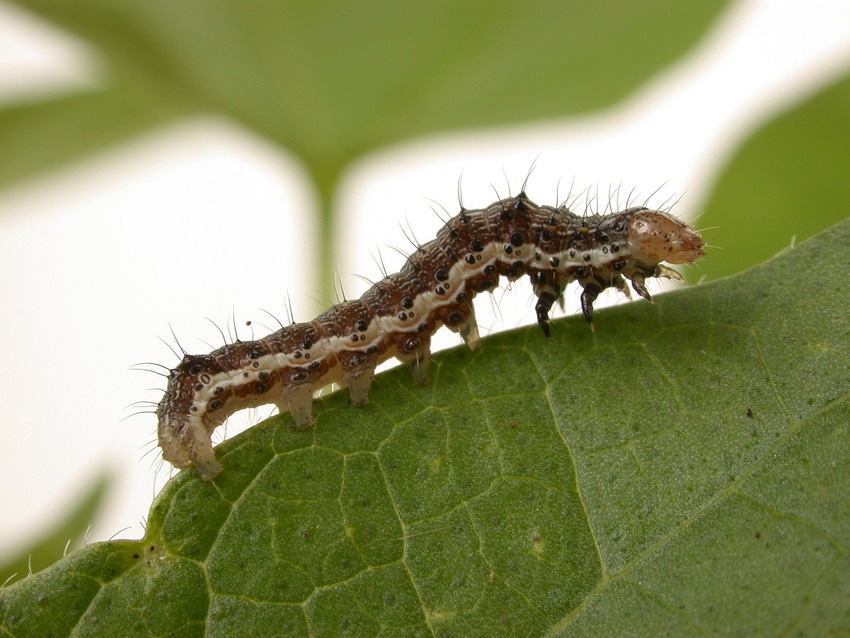Genomes mapped for global megapests cotton bollworm and corn earworm.
August 1, 2017

For the first time, researchers with Australia's Commonwealth Scientific & Industrial Research Organization (CSIRO) have mapped the complete genome of two closely related "megapests," potentially saving the international agricultural community billions of dollars a year.
Led by CSIRO in collaboration with a team of renowned experts, the researchers identified more than 17,000 protein coding genes in the genomes of the Helicoverpa armigera and Helicoverpa zea, commonly known as the cotton bollworm and corn earworm, respectively).
They also documented how these genetics have changed overtime.
This level of detail makes it easier for scientists to predict weak spots in both of the caterpillars, how they will mutate and even breed plants that they will not want to eat.
The bollworm and earworm are the world's greatest caterpillar pests of broad-acre crops, causing in excess of $5 billion (U.S.) in control costs and damage each year across Asia, Europe, Africa, America and Australia.
The bollworm, which is dominant in Australia, attacks more crops and develops much more resistance to pesticides than its earworm counterpart.
"It is the single most important pest of agriculture in the world, making it humanity's greatest competitor for food and fiber," CSIRO scientist Dr. John Oakeshott said. "Its genomic arsenal has allowed it to outgun all our known insecticides through the development of resistance, reflecting its name, 'armigera,' which means armed and warlike."
In Brazil, the bollworm has been spreading rapidly, and there have been cases of of it hybridizing with the earworm, posing a real threat that the new and improved "superbug" could spread into the U.S.
In the mid-1990s, in an attempt to tackle the bollworm, CSIRO assisted Australian cotton breeders with incorporating Bt insect resistance genes in their varieties. Bt cotton plants dispatch an insecticide from the Bacillus thuringiensis (Bt) bacteria that is toxic to the caterpillar. In the following 10 years, there was an 80% reduction in the use of chemical pesticides previously required to control bollworms.
However, the bollworm soon fought back: A small percentage of them built resistance to Bt cotton, and scientists introduced further strains of insecticides to manage the problem.
CSIRO health and biosecurity honorary fellow Dr. Karl Gordon said while a combination of Bt and some insecticides was working well in Australia, it can be costly, so it was important to comprehensively study the pests themselves to manage the problem worldwide.
"We need the full range of agricultural science," Gordon said. "Our recent analyses of the complete genome, its adaptations and spread over the years are a huge step forward in combating these megapests."
Identifying pest origins will enable resistance profiling that reflects the countries of origin to be included when developing a resistance management strategy while identifying incursion pathways will improve biosecurity protocols and risk analysis at biosecurity hot spots, including national ports, CSIRO said.
As part of the research, CSIRO and the team updated a previously developed potential distribution model to highlight the global invasion threat, with an emphasis on the risks to the U.S.
The findings further provide the first solid foundation for comparative evolutionary and functional genomic studies on related and other lepidopteran pests, many of which have considerable impact and scientific interest.
The genome project was undertaken by CSIRO in conjunction with the University of Melbourne, the Baylor College of Medicine in Texas, the French National Institute for Agricultural Research, the Max Plank Institute of Chemical Ecology in Germany and the U.S. Department of Agriculture's Agricultural Research Service.
You May Also Like


.png?width=300&auto=webp&quality=80&disable=upscale)
